Photographs by Jacqueline Banerjee, with thanks to the Dean and Chapter of the Cathedral. You may use the images without prior permission for any scholarly or educational purpose as long as you (1) credit the photographer and (2) link your document to this URL in a web document or cite the Victorian Web in a print one. Click on the images to enlarge them.

The High Altar, with the Clayton & Bell east Window behind it.
The Cathedral Church of St Deiniol, Bangor, restored by Sir George Gilbert Scott from 1868-78, with later work by John Oldrid Scott (1841-1913) and Alban Caroe (1904-1991). As is to be expected, work of many eras can be found in the cathedral, including work designed by the two generations of Scotts.

John Oldrid Scott designed not only for the fine rood screen with its delicate filigree-work, but (before that, in 1881) the carved and gilded tripartite retable. This shows "our Lord in Glory, with the four Evangelists and four Heralds of the Word on either side " (King ). [Click here for close up of central panel.]
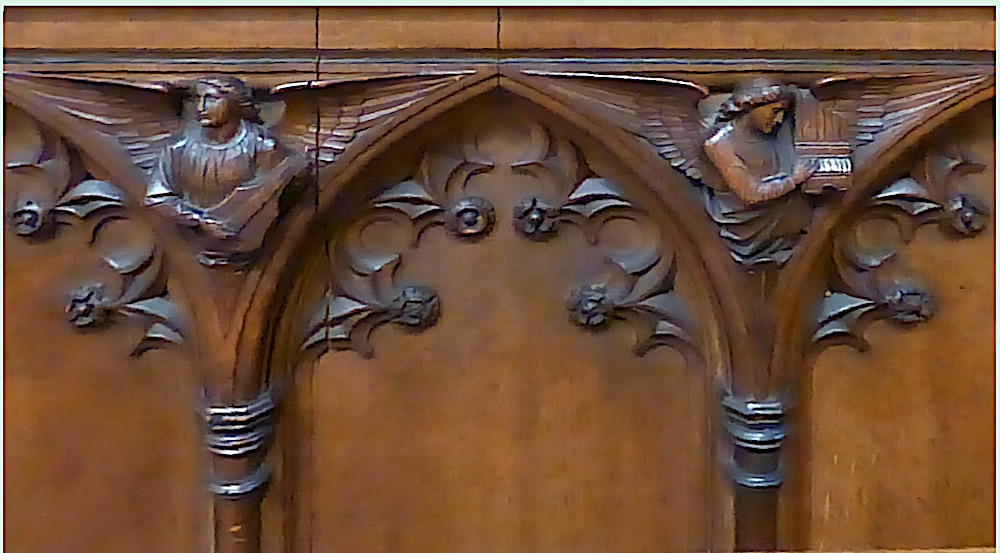

Left: Carving on the front of the choir stalls. Right: The interior of the Lady Chapel in the elder Scott's restored south transept.
The design and carving of the Cathedral's woodwork, including Oldrid Scott's choir screen (1908) and the rood above it, by Alban Caroe (1950), is exceptionally fine throughout. "The woodwork of the Stalls, etc., together with the panelled roof, is new, the canopies are richly carved. They are twenty-two in number, and after a pattern of the fourteenth century with foliations and crocketed pinnacles" (Ironside-Bax 37). The listing text tells us that the painting in the Lady Chapel is set in the archway to the original medieval Lady Chapel, and is the work of Brian Thomas (1934).
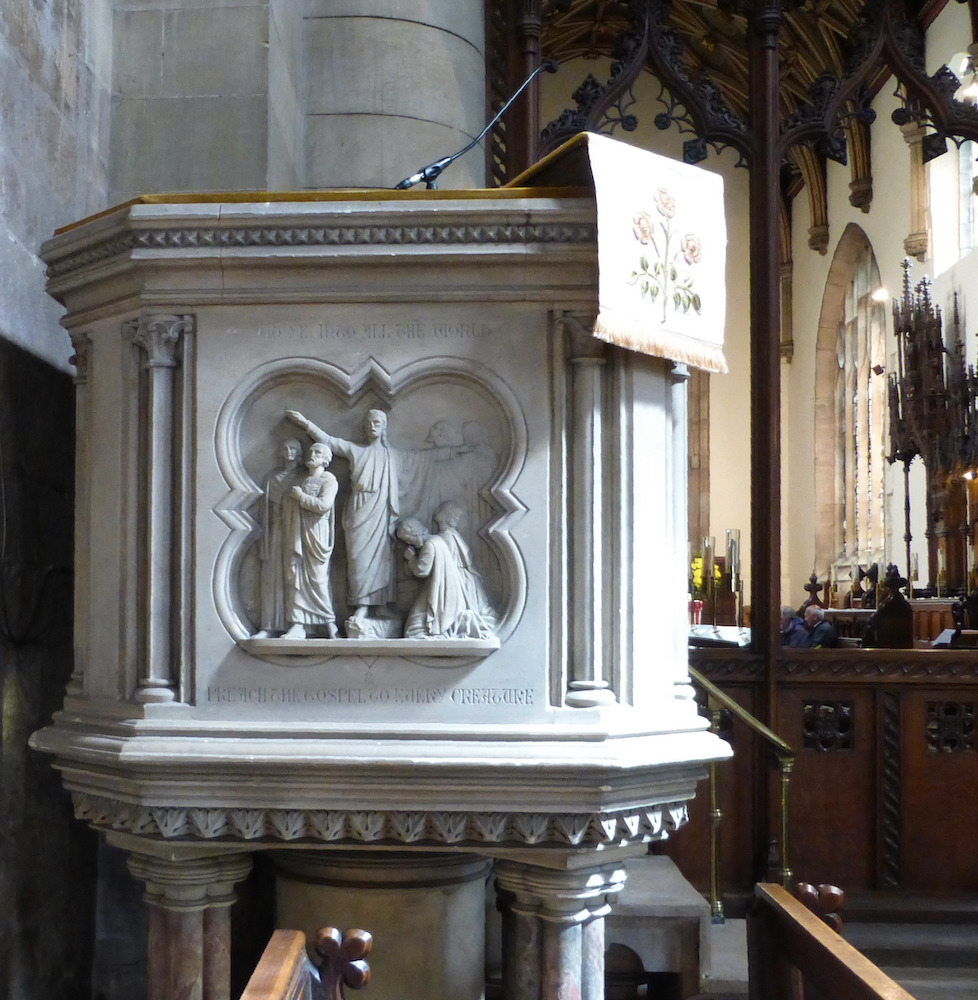
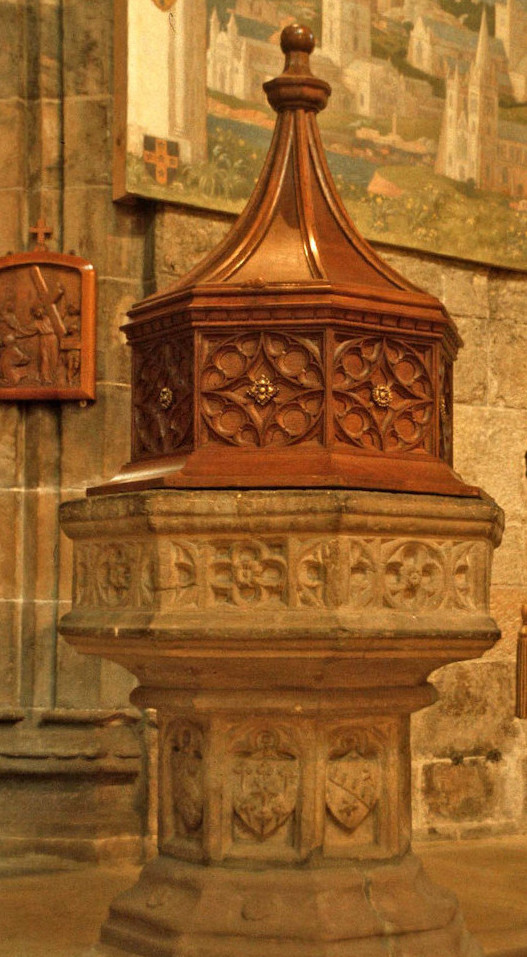

Left to right: (a) The pulpit. (b) The font lid. (c) Close-up of the carving on the lid.
The pulpit is described by Richard King as made of Caen stone with sculptured panels, on marble pillars, and is dated 1880 (perhaps then to Scott's designs). It was in memory of a Reverend Morris Williams, "an eminent Welsh Scholar, Poet and Divine" (fl. 1810-1874) (King 305). The oaken lid of the font features a tiny mouse, the trademark of the Yorkshire craftsman and designer, "Mouseman" Robert Thompson (1876-1955).
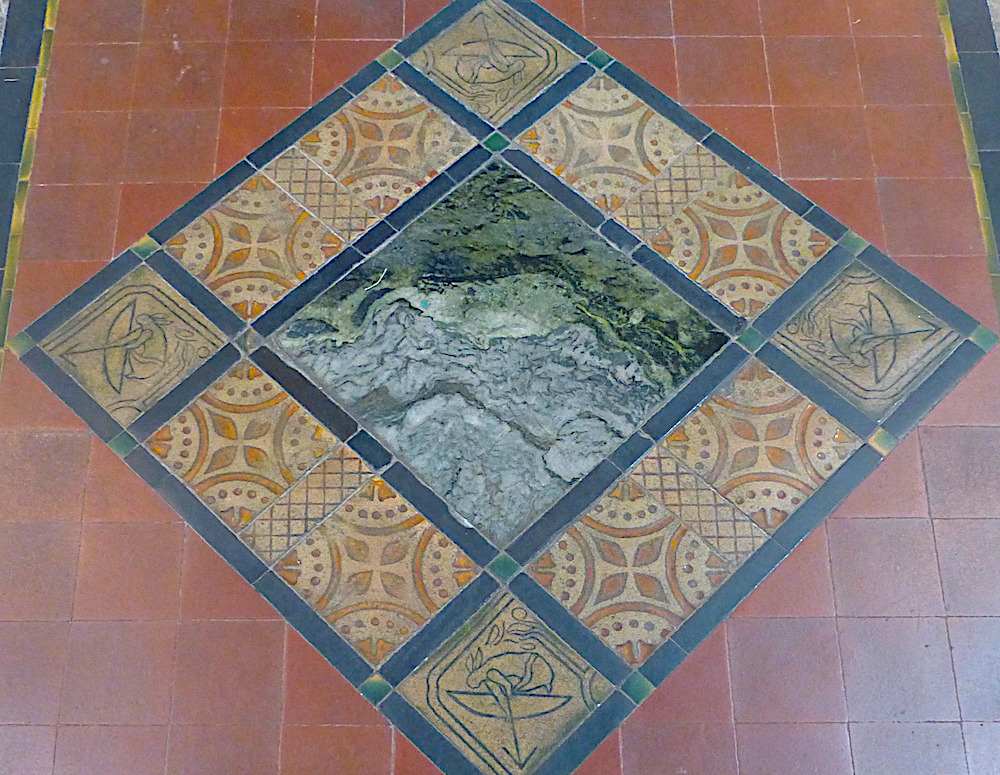
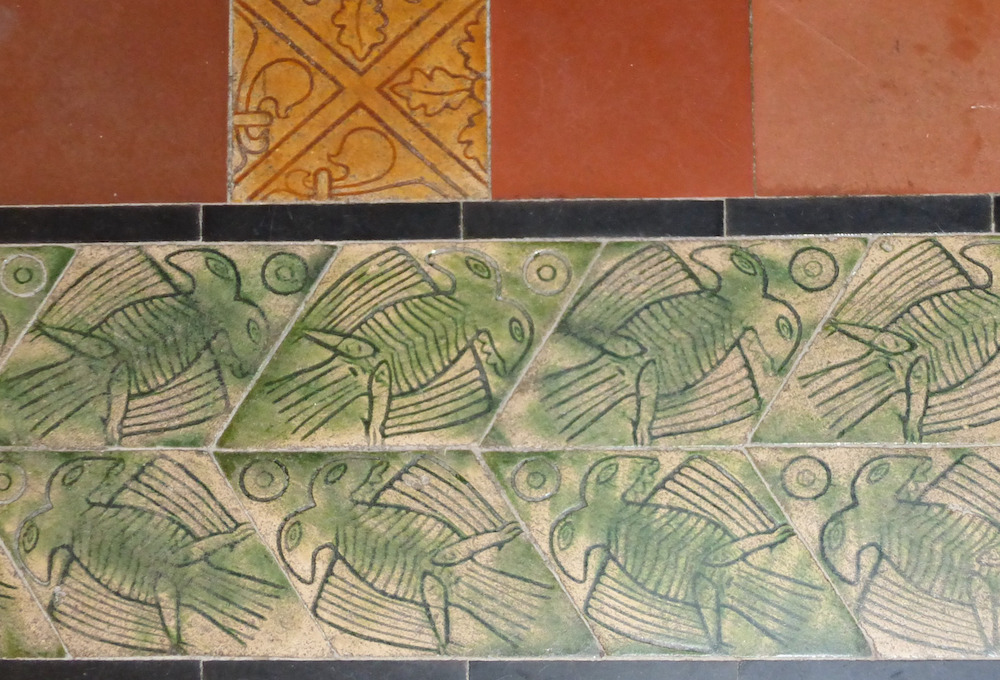
Curiously patterned tilings in the cathedral pavement are the most obvious evidence of Scott's archaeological work. Richard King writes, "The pavement has been designed after patterns of ancient tiles, found in this eastern arm, some of them in situ. They are of very good character, and are of a green colour, formed by the glazing" (314). The ones shown above are as quirky and whimsical as medieval carvings, for example, on misericords. The two-headed eagle is thought to have been the emblem of a tribe that migrated to North Wales in the middle of the fifth century. It suggests the double nature of Christ — the human and the divine. Note the circle above the eagle, representing the worth, and the fish lower down, symbols of Jesus. As for rabbits with bows and arrows, these were, it seems, an example of a popular medieval theme "of the hunted hunting the hunter" (both interpretations come from "The Tiles of Bangor Cathedral" from the Bangor Cathedral Notes 2/94, in a ring-binder on display in the cathedral).
Related Material
- Exterior of Bangor Cathedral
- Interior of Bangor Cathedral
- Stained glass at Bangor by David Evans
- East window by Clayton and Bell
- St Deiniol in a south aisle window by Burlison and Grylls
- St Gabriel, St Michael and St Raphael in the north wall by James Powell and Sons
Bibliography
Cathedral Church of St Deiniol. British Listed Buildings. Web. 18 May 2021.
Ironside-Bax, Pearce B.
King, Richard John. Handbook to the Cathedrals of Wales. London: John Murray, 1887. Google Books. Free Ebook.
Created 18 May 2021